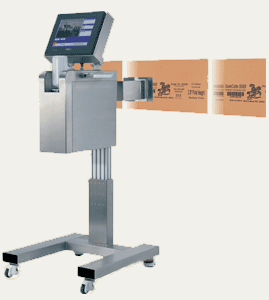TTAB Finds "SURE CODE" for Printers and "SUREPRINT" for Printer Software Confusingly Similar
I'm not so sure about this one. The Board affirmed a Section 2(d) refusal to register the mark SURE CODE for "printers, namely high resolution printers" ["CODE" disclaimed], finding the mark likely to cause confusion with the mark SUREPRINT, registered for "computer programs to control printers." In re Graphic Controls LLC, Serial No. 78289575 (July 19, 2006) [not citable].

As to the relatedness of the goods, the PTO as usual relied on third-party registrations, and the Board, also recognizing that computer programs may be used to control high resolution printers, found the goods to be "closely related."
As to the marks, the Board observed that "code" is merely descriptive for printers, and it deemed "print" to be "at least very descriptive" of printer computer programs. Thus, it concluded, the term "sure" would dominate the marks. Moreover, "the meanings and commercial impressions are not dissimilar," as the Board explained:
"While applicant argues that 'SURE CODE connotes a product that is sure to code correctly while SUREPRINT connotes a product that is sure to print,' it is also true that the term SURE CODE used on printers would likewise suggest that the printer code results in a printer that is sure to print."
The Board concluded that the differences in the marks are eclipsed by the similarities.
Applicant contended that the term SURE is relatively weak, citing four registrations: for SURE MARK for high resolution printing ink, SURELOAD for point-of-sale printers and software therefor, SURE SECURE for printer ribbons, and SURE-PAK for printers for printing labels for food products. The Board, however, rejected that argument, noting that "[a]s to strength of a mark ... registration evidence may not be given any weight."
Finally, the Board noted that it resolved any doubts in favor of the registrant and against the newcomer.
TTABlog comment: Third-party registrations may be used to show that a particular term is weak and entitled to a narrow scope of protection. See, e.g., American Hospital Supply Corp. v. Air Products and Chemicals, Inc., 194 USPQ 340 (TTAB 1997). Applicant's counsel argued that "sure" is a laudatory term in the printing field and therefore merits only a narrow scope of protection, but the Board apparently ignored that argument as it brushed aside the third-party registrations.
Viewing the marks SURE CODE and SUREPRINT in their entireties, and taking into account the differences in goods, I would have reached a different conclusion as to the likelihood of confusion.
Text Copyright John L. Welch 2006.




1 Comments:
The American Hospital decision was in 1977.
Post a Comment
<< Home